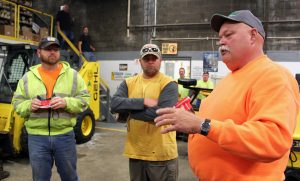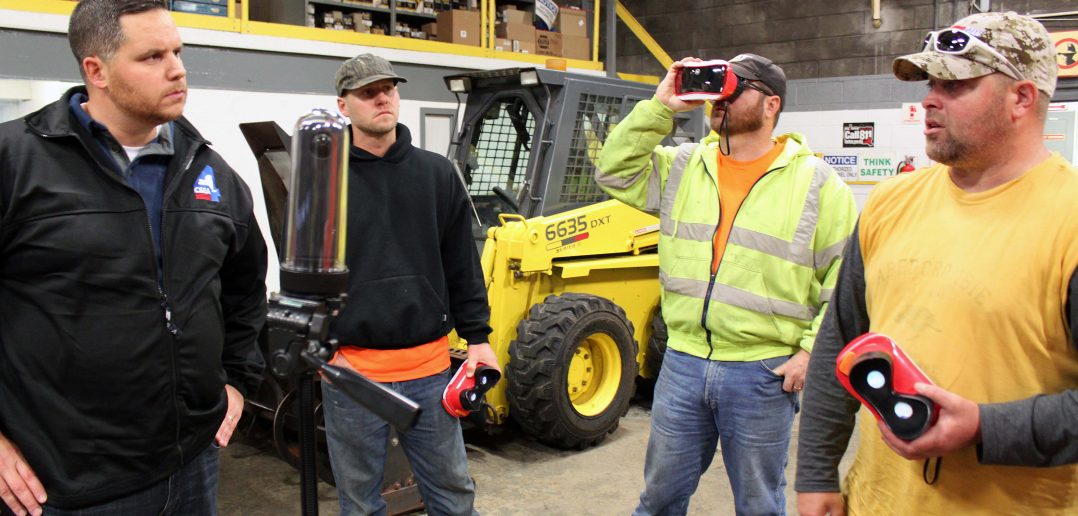CLIFTON PARK — Sometimes, the key to finding — and preventing — a potential workplace hazard is a close-up view.
With that in mind, our members now have a new training resource to help identify potential safety issues and ensure our employers are keeping us as safe as possible on the job.
Clifton Park Highway Unit members were recently the first CSEA members in the state to view new equipment with an eye towards safety.
The goggle-type devices, reminiscent of viewfinder toys for kids, will be integrated into our union’s ongoing health and safety trainings to help members across the state gain better understanding of potential workplace dangers.
CSEA’s Occupational Safety and Health Department staff recently sought and received grants to help purchase the devices.

Clifton Park Highway Unit member Dave Pettis, right, makes an observation about the equipment as co-workers, from left, Andy Jerome and Cory Schumacher listen.
Each Occupational Safety and Health specialist was given a kit of six viewfinders and a 360-degree camera with a tripod and hand-held extension.
The equipment, which includes a built-in magnetometer and gyroscope, uses a cell phone app, “THETA,” to transform images into a 360-degree field that makes it easier to spot potential hazards.
“It’s a great way to bring the hazard into the classroom without actually subjecting our members to it,” said CSEA Occupational Safety and Health Specialist Brian Pomeroy. “They get to view the hazards in a classroom setting, ask questions and answer the best way to deal with a particular given real-life situation such as proper personal protective equipment.”
 While testing out the new equipment, unit members identified immediate uses for the device, including for confined spaces, tree work and cleanups.
While testing out the new equipment, unit members identified immediate uses for the device, including for confined spaces, tree work and cleanups.
Unit members also noted they liked the idea of images being viewed remotely so that other employees, including management, could see what they are up against in real-life situations.
“This device could tell you what you need without risking injury,” said Cory Schumacher, a laborer and Clifton Park Highway Unit member.
“It’s definitely a great start to some exciting new trainings CSEA’s Occupational Safety and Health Department is developing to stay on top of the latest techniques and training tools,” Pomeroy said.
— Therese Assalian



